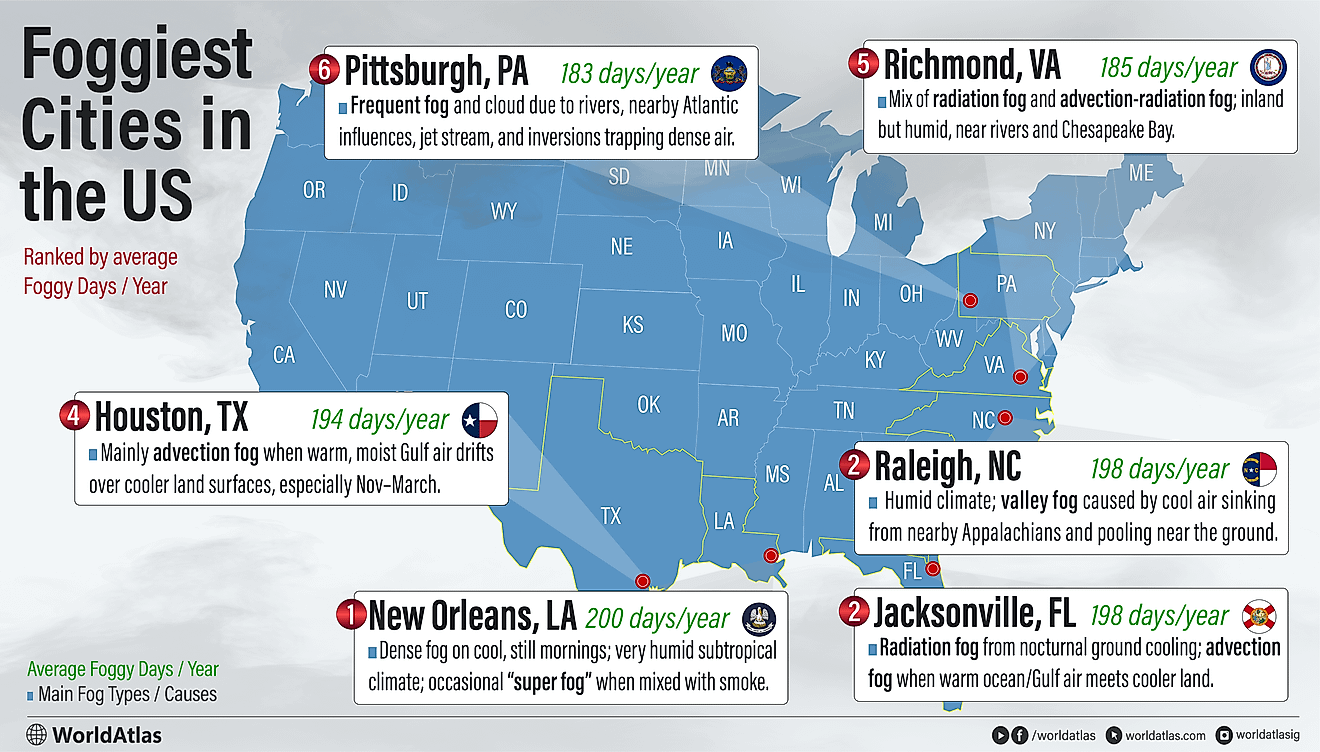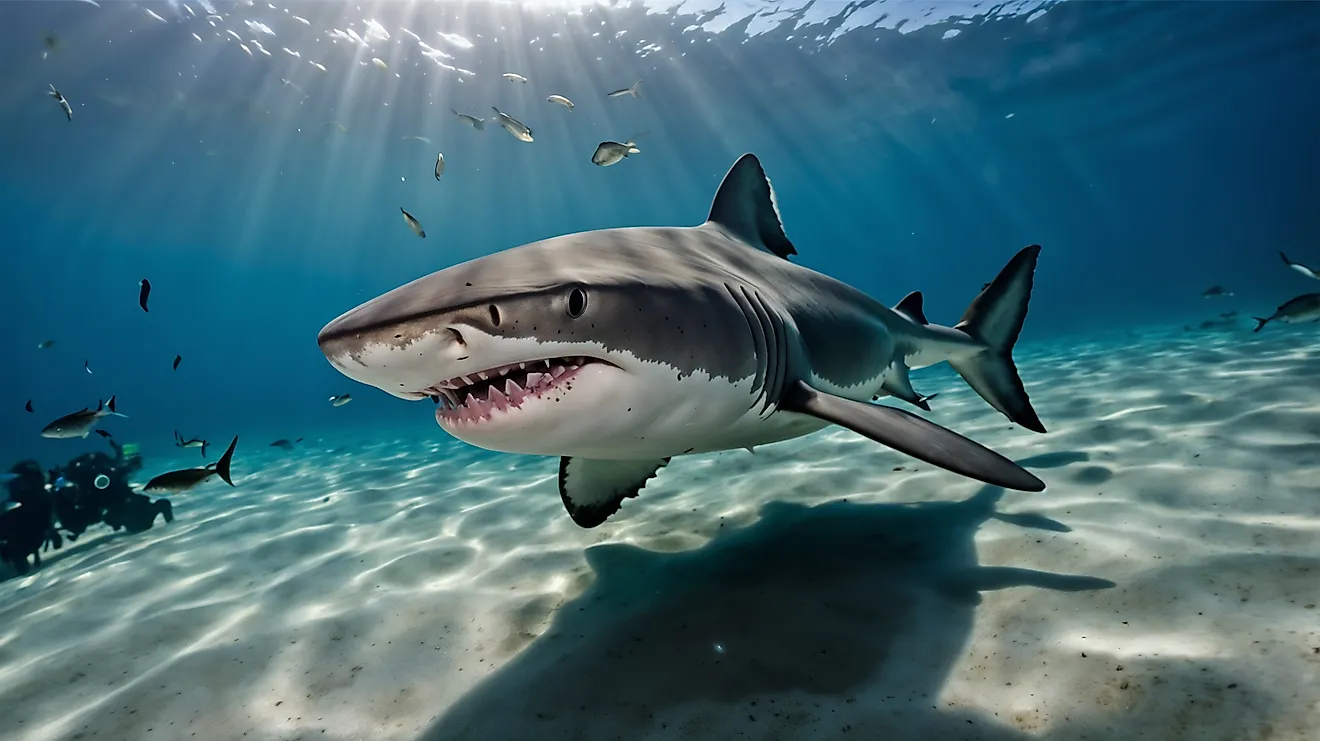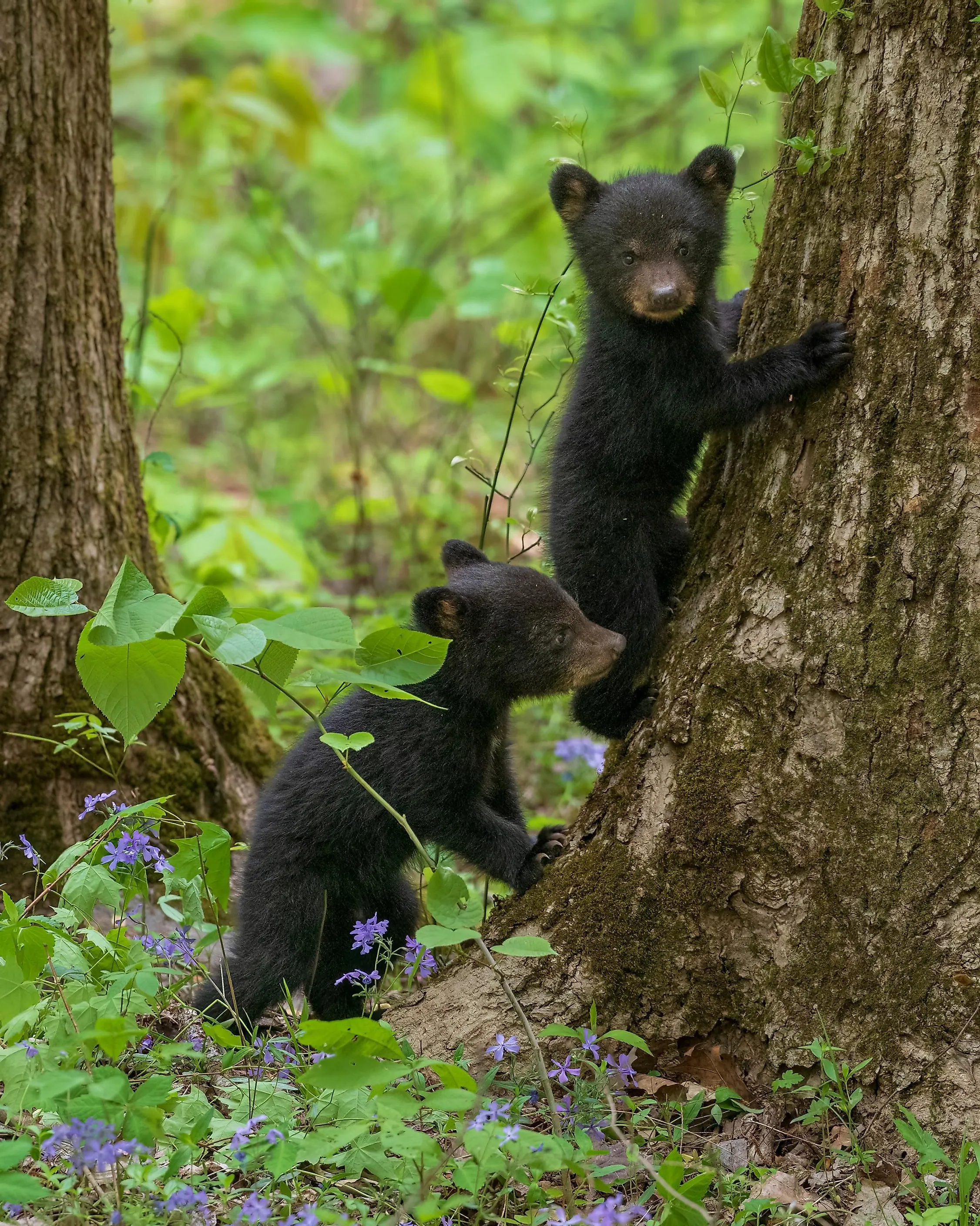
The 13 Most Beautiful Wild Animals In Wisconsin
From expansive lakes and deep forests to sandy prairies and rolling hills, the Badger State houses an exciting natural bounty with rich biodiversity. Beneath the dense canopy, along the lengthy shorelines, and inside the deep waters lies an ideal habitat for a vast range of beautiful species. These come in all shapes, sizes, and forms of beauty, featuring shimmering coats, colorful features, and conspicuous cries, making Wisconsin the perfect playground for nature lovers and animal enthusiasts. This article sheds light on some of the most charming wildlife in Wisconsin, focusing on their physical appearance, unique characteristics, and other aspects that make them charismatic top people. While there are different perspectives on judging beauty, there is no disputing the aesthetic diversity of species throughout Wisconsin's gorgeous landscapes. Mother Nature has an interesting way of portraying her awesomeness, and these wild animals in Wisconsin embody the beauty that exists within the state's wilderness.
White-tailed Deer
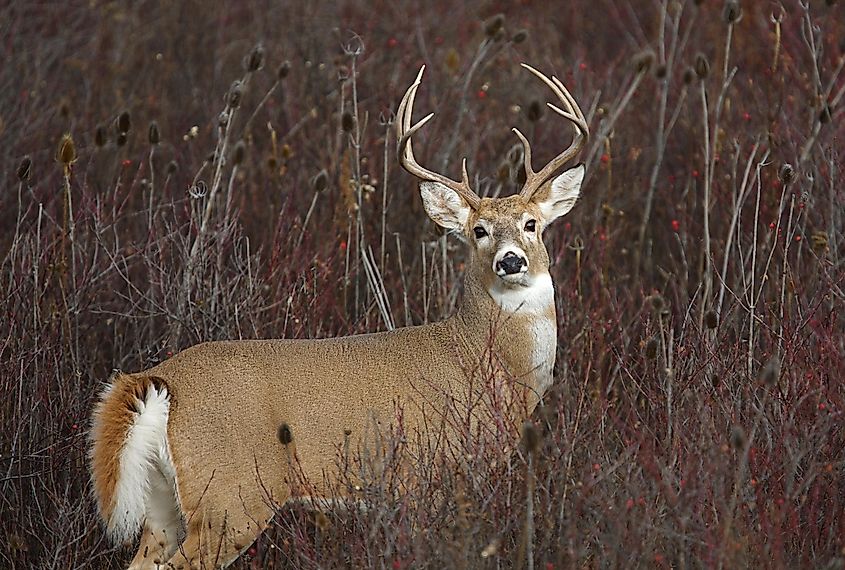
The white-tailed deer, scientifically known as Odocoileus virginianus, stands out for its unstreaked tail that appears white when raised. Its coat changes color throughout the seasons, from gray to reddish-brown in summer and speckled white in winter. The males, or bucks, grow massive antlers in the fall that are shed each February. Their size, rangy build, and seasonal transformations contribute to the white-tailed deer's status as a symbol of nature's resilience.
As one of North America's most abundant and widely distributed mammals, white-tailed deer delight outdoor enthusiasts across Wisconsin with their natural splendor. Their presence graces nature documentaries and is featured in works of art depicting the state's forests and prairies. Dogs and their spotted fawns are beloved for their maternal bond, and glimpses provide a thrill of wildlife encounters. For indigenous cultures, the white-tailed deer held spiritual significance for providing meat, hides, and antlers used for medical and artistic purposes.
Painted Turtles
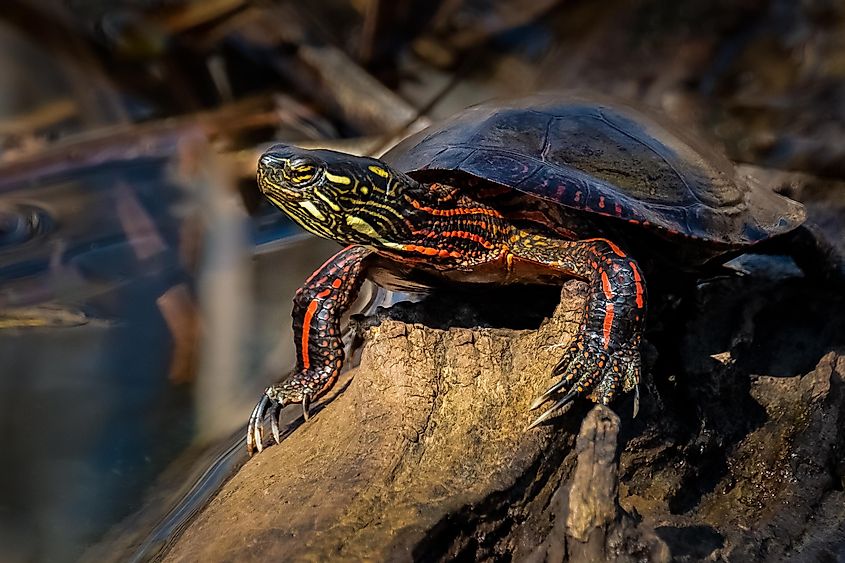
The painted turtle (Chrysemys picta) gets its name from its ornately patterned top shell or carapace, which can be yellow, red, or orange with patterns of radiating black lines and spots. Their smooth yellow or orange skin and shell underside contrast conspicuously with their colorful topside patterning. Measuring 4-8 inches as adults, their intricate shells and sluggish movements make them a striking sight in wetlands.
Painted turtles bask in the sun, near shorelines and in shallow ponds across Wisconsin, revealing their spectacular shells. Their natural camouflage disguises them well, but their beauty is hard to miss. Depicted in Native American rock art and admired by wildlife enthusiasts, painted turtles hold aesthetic and cultural significance. Their patterns have inspired questions about how coloration benefits survival in different ecosystems. Though small, their eye-catching shells leave a big impression, reminding observers of nature's unique artistry in everyday sights.
Red Fox
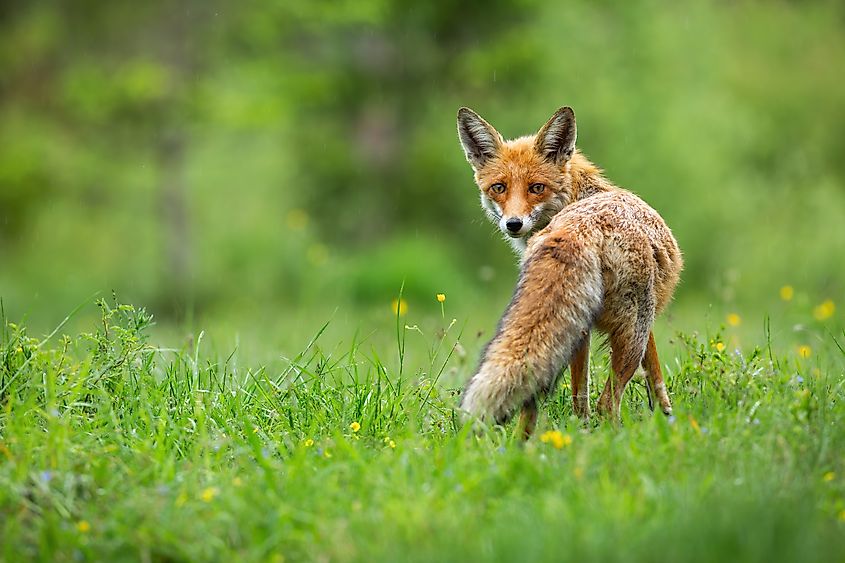
The red fox (Vulpes vulpes) is easily identified by its charming coat of rusty red fur. With bushy tails, pointy ears, and long legs adapted for running, red foxes exhibit elegant forms as they walk through fields and forests across Wisconsin. Their fur provides superb camouflage in autumn landscapes but is also bright enough to stand out, making for beautiful wildlife sightings. Sociable yet elusive, red foxes captivate people with their playful demeanors and cunning habits.
Their flashes of color brighten rural scenes and symbolize wilderness even in suburban spaces. Featured prominently in folktales and mythology for their trickery, red foxes hold cultural significance in many societies. Their charming encounters with humans lend an air of mystery to their character. Whether peeking from brush or pouncing on unwary voles, red fox appearances never cease to charm observers lucky enough to cross their path
Bald Eagle
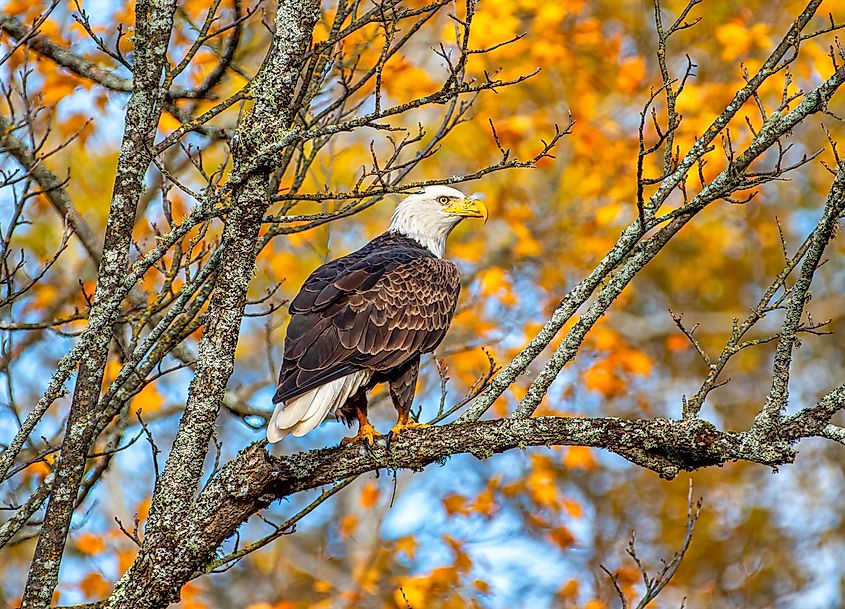
The bald eagle (Haliaeetus leucocephalus) is a familiar sight along Wisconsin's lakeshores and river valleys. Distinctive in appearance, with white heads and tails contrasting against dark brown plumage, bald eagles have nearly 7-foot wingspans. Soaring over forests and open waters, searching for prey, they cut an impressive figure. Their massive size, striking colors, and effortless flight have long captivated human onlookers.
Portrayed as a national symbol of freedom and natural beauty, bald eagles are a beloved part of Wisconsin's landscape. Often spotted perched on tall trees or soaring high above, they are true Northwood icons. Their majestic profiles and skilled hunting techniques inspire wonder and are frequently depicted in Native American art and contemporary nature photography from the state. By protecting wetland habitat under the Bald and Golden Eagle Protection Act, bald eagles have recovered from prior endangerment, ensuring future generations can enjoy their epic aerial displays and presence across Wisconsin's wild expanses.
Black Bear
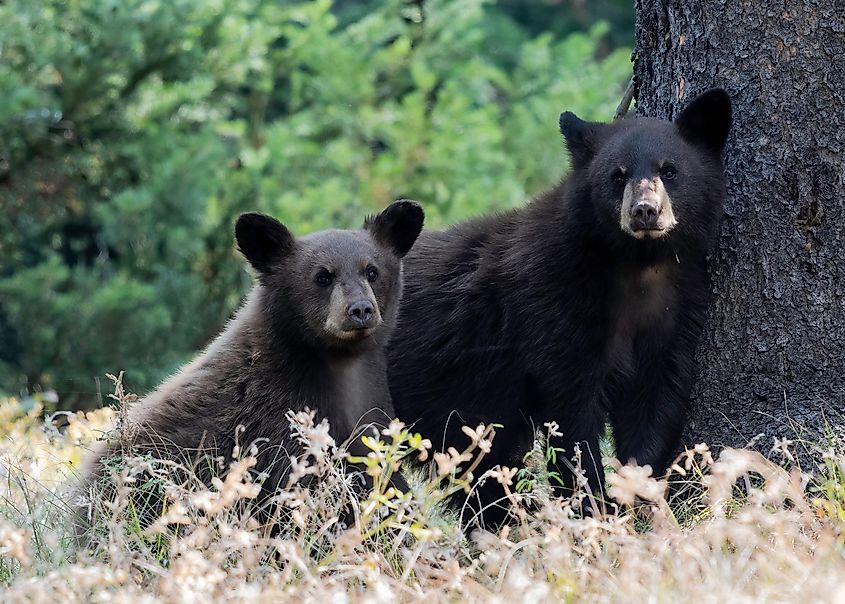
The American black bear (Ursus americanus) has a powerfully built form and lustrous black or brown fur. Ranging from medium to large sizes, bears can weigh up to 600 pounds, though Wisconsin's northern woods are home to smaller varietals. Even though they can be clumsy in their walk and even look confused, their large size and muscles make them seem very strong. They have an omnivorous diet that sustains their sizes throughout Wisconsin's seasons.
Come spring, mothers lead cubs to streams where the family drinks and plays - a delight for watchful humans. Holding cultural significance for Native peoples as symbols of wisdom, bears retain spiritual meanings today. Although feared for potential danger, most bears remain wary of people and prefer solitude in deep forests. Glimpsing a solitary bear foraging or family floating downstream offers a thrill and reminder of nature's awesomeness.
American Bison
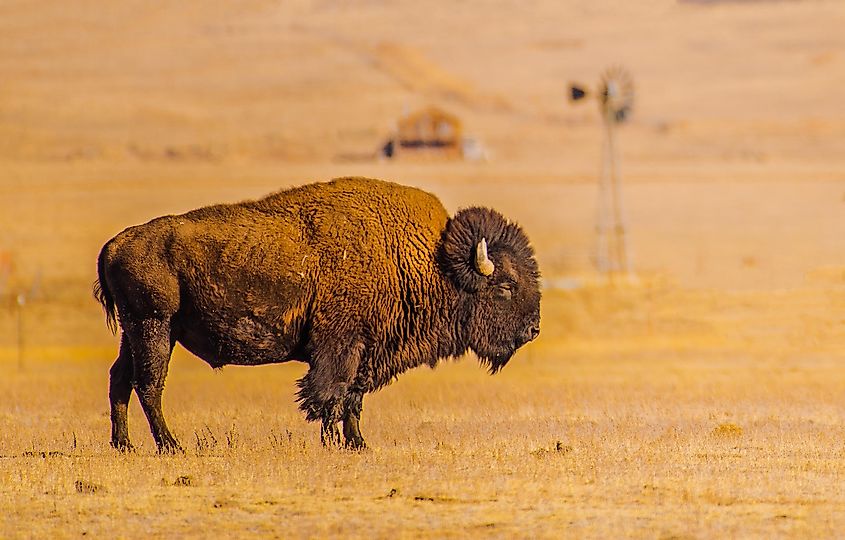
The American bison (Bison bison), also known as the American buffalo, is an iconic symbol of the prairie landscapes it once roamed in massive numbers. Its shaggy brown fur, curved horns, and sturdy build can exceed 2,000 pounds, and the bison possesses an aura of prehistoric strength. Though hunted to near extinction in the late 1800s, protection efforts have allowed reintroductions to places like the Red Cliff Band of Lake Superior Chippewa's reservation.
Spotting a bison herd across northern Wisconsin's open fields and forests offers a connection to the state's natural heritage. Their immense scales and muscular appearance are uniquely impressive. In the folklore of Indigenous peoples of the plains, bison held spiritual significance as central providers. As conservation has enabled rebound, witnessing bison roam freely again lifts the local spirit.
Grey Wolf
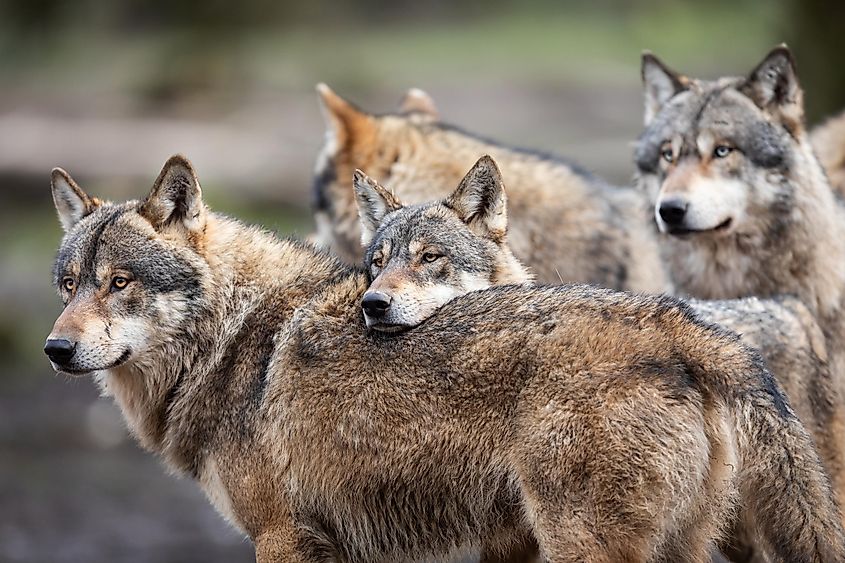
The gray wolf (Canis lupus) is a fitting symbol of wilderness. It has a lean physique, pointed face, and colors ranging from gray to black, which to many, embody strength and mystery. Advanced pack hierarchies and cooperation in hunting are evidence of their high intelligence. Though persecuted and driven out of Wisconsin by the 1960s, wolves started returning naturally in the 1970s as protection grew.
Now reestablished with an estimated 1,200 wolves in the state, there is a high chance of observing remarkable pack behaviors, from group hunting strategies to parenting of pups. Witnessing a wolf's swift, decisive runs across the forest or along riverbanks offers is a once-in-a-lifetime experience. Through ecological regulation of prey like deer and elk, wolves play a formative ecological role in forest regrowth. For Native peoples, wolves symbolized resilience, spirituality, and lifestyle.
Wood Duck
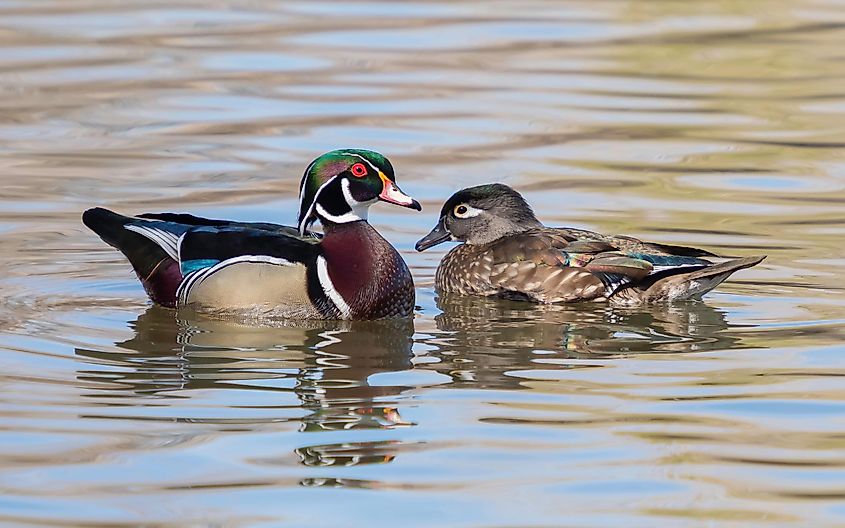
One of the most visually appealing wild animals in Wisconsin, the gorgeous wood duck (Aix sponsa) brightens wetland scenes across Wisconsin with splashes of vibrant hues. Males exhibit an attractive coat of feathers during the breeding season, with glossy, vibrant green heads and striking reddish crests—earning the nickname "sunray duck." On the other hand, females exhibit cryptic brown and buff tones ideal for nesting camouflage in tree cavities near water. From their elevated nests, ducklings make daring leaps into the air at a young age when it's time to flee the nest.
Agile and acrobatic swimmers, wood ducks forage in shallow freshwater marshes, scooping up insects, seeds, shoots and mollusks to fuel their acrobatics. Observing courtship rituals like head-pumping displays or watching crested males soar through wetland trees in loose flocks creates a sense of tropical vibrancy and natural artistry despite Wisconsin's cool climate.
Monarch Butterfly
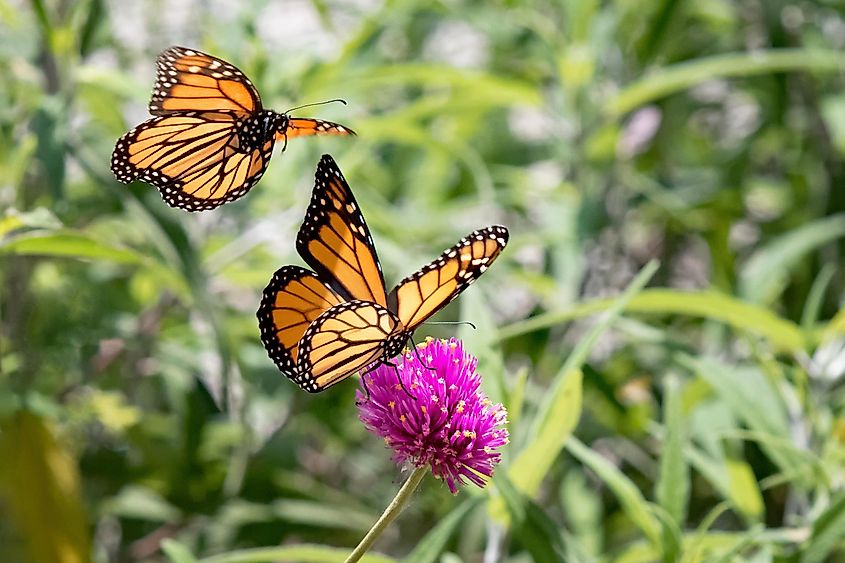
The striking orange and black monarch butterfly (Danaus plexippus) is a welcome sight in Wisconsin gardens and meadows each summer and fall. Among the largest butterflies in North America, with a wingspan of up to 4 inches, monarchs have a recognizable coloration. Their broad and blunt wings bear vibrant shades and patterns that serve as camouflage from predators in juvenile stages before metamorphosing into adults.
From late August through October, monarchs undertake a highly anticipated annual migration, with successive generations traveling thousands of miles from the northern U.S. and Canada to overwinter in central Mexico. Those that pass through Wisconsin play a small role in this great phenomenon. Seed pods and nectar plants in the state support fat-building for the journey south. Encountering monarchs floating in the calm breeze presents a serene and romantic scene from a movie.
Eastern Massasauga
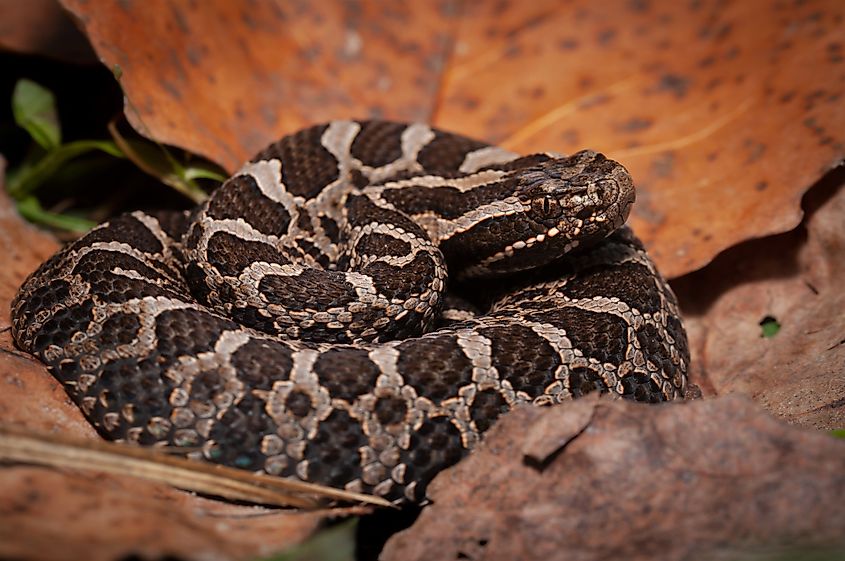
The Eastern Massasauga rattlesnake (Sistrurus catenatus) is precarious at the northern reaches of its range in Wisconsin. Named for its habitat bordering marshes, this small viper reaches an average length of 2 feet. Its thick body and triangular head support camouflaging patches of brown, gray and black bands that provide camouflage amid grasses and leaves.
Though its rattle noise and venom make it feared, the reclusive Massasauga's diet consists mainly of small mammals and poses little danger to humans if unprovoked. However, its habitats have been dramatically reduced by wetland drainage. Now a state-threatened species, isolated populations can be encountered in a few northern counties. Observing one curled in isolation is a reminder of the priceless value of all wildlife and ecosystems they interconnect.
Pileated Woodpecker
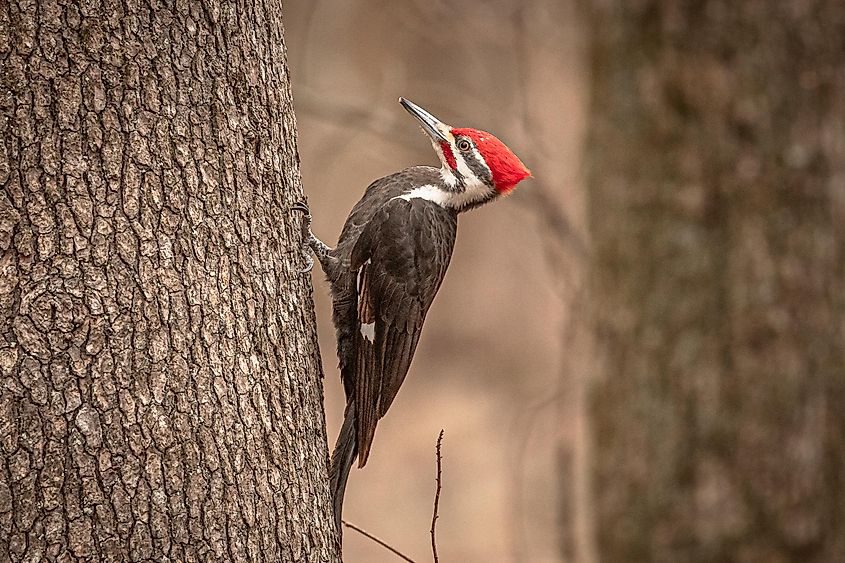
The pileated woodpecker (Dryocopus pileatus) is an iconic resident of Wisconsin's forests. At nearly one foot long with over a foot wingspan, it is the largest woodpecker on the continent north of Mexico. Its striking black-and-white feathers and bright red crest make it unmistakable. A skillful carpenter, it digs cavities into dead or dying trees with its chisel-like beak to create nesting sites and forage for insects like carpenter ants.
Its loud, rapid thudding sound rings through wooded areas as it works. Often spotted high among branches or scaling trunks, it displays acrobatic skills to access food under the bark. Observing this diminutive yet adorable craftsman at work inspires awe. Its relentlessness in poking holes and the resultant wounds on an aging tree bark truly embodies its dedication and industry.
The American Badger
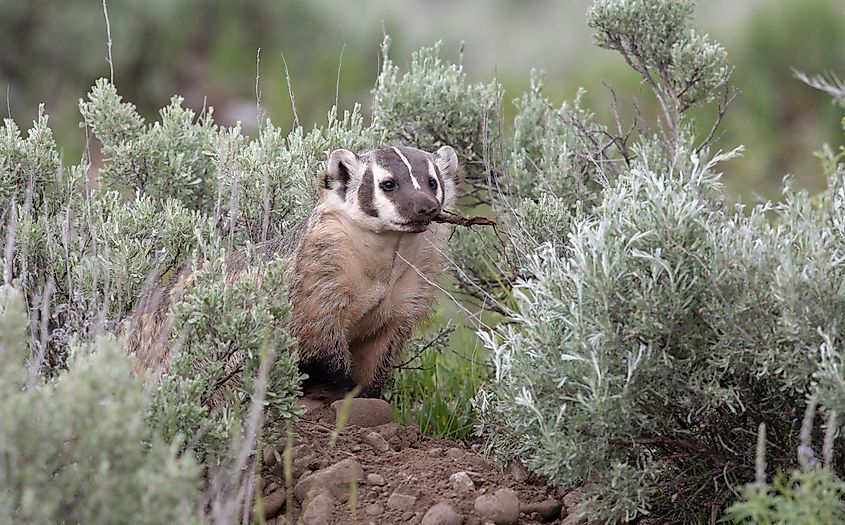
The American badger (Taxidea taxus) is a feisty and furry resident of Wisconsin's grasslands and shrublands. With a low-slung build, short legs, and sharp claws, it is perfectly adapted for digging burrows. Striking black and white facial markings contrast with its gray hide. As an opportunistic hunter, it preys on small mammals, reptiles, and insects. Its powerfully built and muscular forequarters allow it to plow through the soil with speed and ferocity to ambush prey underground. Though seldom seen aside from its recognizable digging activities, watching a badger using its stout claws to rip open a burrow leaves many in awe of its craftsmanship and tenacity. The badger's tough, relentless spirit resonated with pioneers in Wisconsin and led to the state's nickname "The Badger State."
American Robin
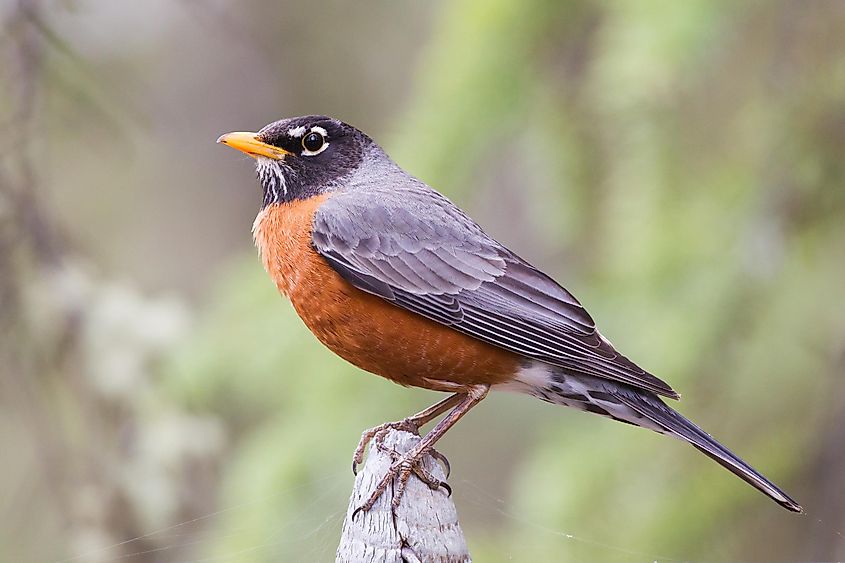
The American robin (Turdus migratorius) is common in Wisconsin. It is brightly colored with gray back feathers and an orange chest. It also has a black head and a bold white eye ring. The robin likes open spaces like yards, parks, and farms and walks on the ground searching for earthworms, insects, and berries to eat. In the spring, the birds return to Wisconsin in large flocks after wintering farther south. Males sing loud, warbling songs to attract mates and defend territories.
Robins build cup-shaped nests of grass, mud, and plant fibers tucked in shrubs and trees. The robin was selected as Wisconsin's state bird because it is abundant and familiar to residents. It is seen throughout cities and the countryside. Children learn that robins bring the joyful message that winter is ending and spring has come.
Several forms of natural beauty exist throughout the major landscapes in Wisconsin. One of the best ways to appreciate Mother Nature is to respect the right of different species to exist among us and to protect their natural habitat. It is critical to note that each, whether small, ugly, or overlooked, has an important ecological role to play, and conserving the wild animals in Wisconsin guarantees the continuity of the natural diversity around us.










